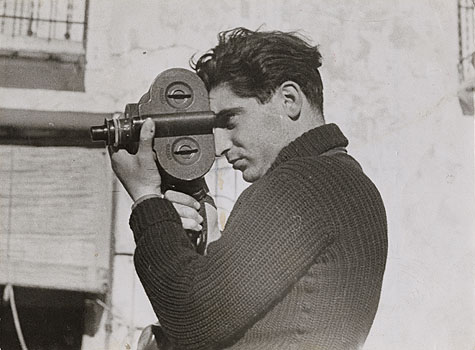From its very beginnings in 1877 when Eadweard Muybridge took sequential photographs of moving horses and animated them with the zoópraxiscope—a device he invented two years later to project the images—documentary film has taken many forms and adopted numerous styles and techniques. Most notably, was when the Lumiére brothers invented the first movie camera in 1895 that could hold fifty feet of film stock, with which they captured a train pulling up to a station. As a result, the concept of unedited documentation of real-life situations referred to as “actualities” came about. Today, the two most common methods used in the genre however, are ‘direct cinema’ (the more commonly recognized, ‘standard’ method, if you will) and ‘cinema vérité.’
Both practices were quite revolutionary in their time and were developed during the same historical period in the early ‘60s—a period where documentary cinema had become more comparable to highly edited post-World War II propaganda than portrayals of real events. Developments in technology like smaller and lighter cameras that used 16mm film stock (as opposed to its 35mm predecessor), and portable sync sound allowed for a much less obtrusive way of filming events on site as they happened. The major film crews could be significantly downsized, editing became much more unnecessary and the hand-held cameras could ensure a closer, more authentic look at the subjects in question. Although the two similar techniques came about with synonymous ideologies about championing realism in film, they do have some subtle, yet important differences.
The Maysles brothers, Albert and David Maysles of the United States were most well-known for developing direct cinema. Three of their most popular works in the genre were Salesman (1969), Gimme Shelter (1970), and Grey Gardens (1975). Rather than planning a scene they wanted to shoot, the brothers would let the story unfold organically as the camera rolled. They believed the documentarian was an objective observer, a completely invisible passivist as opposed to a director or participant—a noteworthy sentiment that sets the genre apart from cinema vérité.
French for “film truth”, cinema vérité was first developed by French ethnologist and filmmaker, Jean Rouch during the early 1960s and brought to documentary filmmaking a natural dialogue and authenticity of action. But unlike its direct counterpart, the philosophy behind this technique was that the filmmaker actively participates in the film as a subjective observer where necessary; combining observational AND participatory filming in the same breath. Essentially, there is an awareness of the camera that is filming the scene, thus establishing a connection between the cameraman/filmmaker and those who are being filmed. It can also involve stylized and staged set-ups and the degree of intervention is greater than in direct cinema, with the filmmaker’s subjective involvement evoking provocation—something critics point out goes against the whole foundation of documentary as a means to portray uninterrupted truths. In its defence, famous vérité filmmaker Dan Kraus once said “no documentary can ever show you the truth, because there are multiple truths, but vérité can at least relay the truth as seen by a single observer…” Similarly, Rouch’s view about the camera provoking subjects was that provocation reveals people’s true selves as the creatures of fantasy, myth and imagination, which he believes constitutes the most authentic self.
One of the earliest and most widely known of Rouch’s films using vérité was Chronicle of a Summer (1960), which he did with fellow French filmmaker Edgar Morin. By gathering a number of Parisians, including a few supporters of a group with socialist ideologies, either through one-on-one interviews or group discussions, the film addresses topics ranging from happiness and love to colonialism and racism. True to the active role of vérité filmmakers on-camera, the action of the characters in the film seem to always be a response to an impulse by the leader of the conversation or the interviewer. Both Rouch and Morin play with their own roles within the film and are never detached or disengaged from the process of filming. They even included responses from all of the characters in the edited film after showing them the original; allowing for the luxury of self-representation in all parties that resulted in a sense of equality never achieved in direct cinema.
In comparison, both direct cinema and cinema vérité aim to uncover truth in two different ways. The former hopes to unveil truth through the camera’s observation of events and subjects; the latter uses any means possible to seek out truth and is intrinsically an internal process being gradually revealed. Nevertheless, documentary is rarely a matter of pure, untouched observation, but within both methods lies an opportunity for revelation—regardless of the degree of mediation by both the camera and the filmmaker. As such, they are viewed equally as two alternative methods of documentary filmmaking whose use of particular cinematic philosophy and new technology had a huge influence on many generations of filmmakers which is still felt today.
[su_note]Learn more about the School of Documentary Filmmaking at the New York Film Academy by clicking here.[/su_note]


